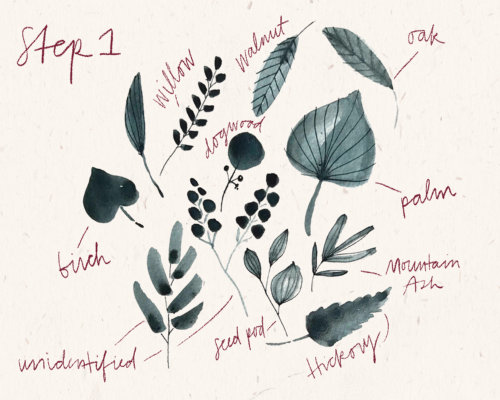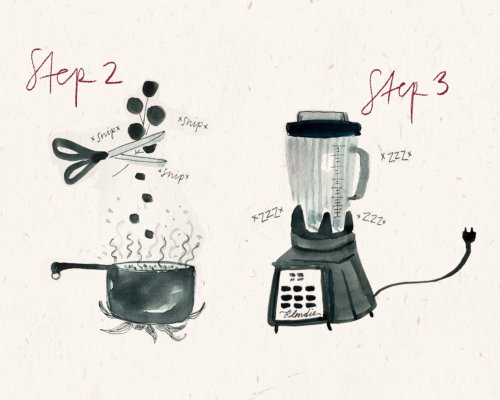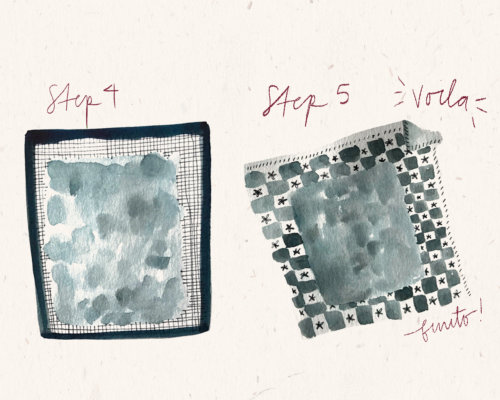
How To Make Paper From Plants (And A Look Back at the History of the Art Form)
Throughout history, paper has functioned as both a medium on which to create art and a mode of art in itself. At it’s most basic, we rely on paper to record information. Yet, there’s no limit to how elaborate paper can become, between the textures, materials, dies, and decorations that go into making one of Earth’s most natural products. Today, stores like Kate’s Paperie, Paper Presentation and Papyrus all cater to these endless options– but what about making your own?
We’re so dependent on paper that it’s easy to forget the original source: trees. Paper was invented in China more than 2,000 years ago. “The Chinese realized that plant fibers, now known as cellulose, could be beaten, mixed with water and then left on a screen to drain until a sheet — a sheet of paper — remains,” a writer for the The New York Times, reviewing Mark Kurlansky’s Paper, wrote in May of this year. Paper making later expanded to Japan and Korea, and, simultaneously Central Asia and the Islamic world. As paper making improved, the ability to record changed the course of civilization so thoroughly that it’s now impossible to imagine the world without the written word.
The Ancient Egyptians were known for their scrolls and paintings on papyrus paper, one of the first materials used to make paper. Papyrus reeds grow in dry climates and in shallow water, and their stem has a triangular shape like a pyramid. The process of turning papyrus into paper takes about a week from start to finish, and requires weaving strands of the plant into threads. The result is gorgeous, delicate, yet extremely durable paper. (You can watch a demo from start to finish here.)
The main steps involve slicing the papyrus into strips, and rolling them so that they flatten. Then you soak the pieces in water for 3-6 days, depending on the desired color, and weave the strips together. Then, an artisan would theoretically leave it in a press for three days, and then under the sun to dry for one more day.
Papyrus isn’t as readily available as weeds and other foliage, though, which latter can be found anywhere and used as material to make delicate paper. The process is simple and involves boiling leaves until they soften and then blending them to create paper pulp. (You can watch a video of this demo here.) You’ll need a container, a blender, a pot and a [easyazon_link identifier=”B00161SHAM” locale=”US” tag=”gardcoll03-20″]deckle[/easyazon_link]. (If you don’t have a deckle readily available, you can mount a mosquito screen onto a photo frame.)
First, cut the foliage into one-inch squares. Next, boil the plants in water for a few hours, which helps to disintegrate them. We recommend incorporating scraps from a leftover bouquet or foliage from your yard to add a beautiful, textured element. Rinse thoroughly, and blend the mixture into a pulp. Pour this mixture into a container that fits your deckle, then put the pulp on a screen. Drain the excess water and then lay the paper on a damp cloth to dry.
Last year, Detroit-based artist Megan Heeres exhibited a variety of paper made from foliage in a solo interactive exhibition called The Invasive Paper Project. She envisioned the process of paper making with foliage as an exciting way to create awareness of the beauty of weeds. Her exhibition was also interactive, bringing workshops into the gallery space. Accordingly, Heeres chose phragmites, honeysuckle, and garlic mustard that she collected around Detroit for her project– bringing a unique aspect of the garden into the lives of visiting community members. The result is three distinctly different types of paper: green, brown, and off white in color.
Given that we use paper to record, educate, share and inform, it makes sense to create it from materials that are essential to our lives, like foliage.
Heere’s project illustrated the beauty of these often overlooked invasive plants. The process of using weeds is surprisingly similar to processes invoked in industrial factory paper mills, wherein refuse is recycled to make new paper. Making DIY botanical paper at home manifests the same process on a much smaller scale with a slightly different material.
Even though we’ve become an increasingly paperless society, there are still centers dedicated to preserving paper as an art form. Today, paper making often goes hand in hand with bookmaking. The Center for Book Arts in New York City, for example, teaches workshops about bookbinding, and hosts artists exhibitions of their handmade books. At the Center, these elaborate books are on display as works of art unto themselves, composites of beautiful papers forming their aged pages. Given that we use paper to record, educate, share and inform, it makes sense to create it from materials that are essential to our lives, like foliage. Doing so manifests our delicate relationship with the nature, and the innovative and enduring ways in which it continues to give.




































